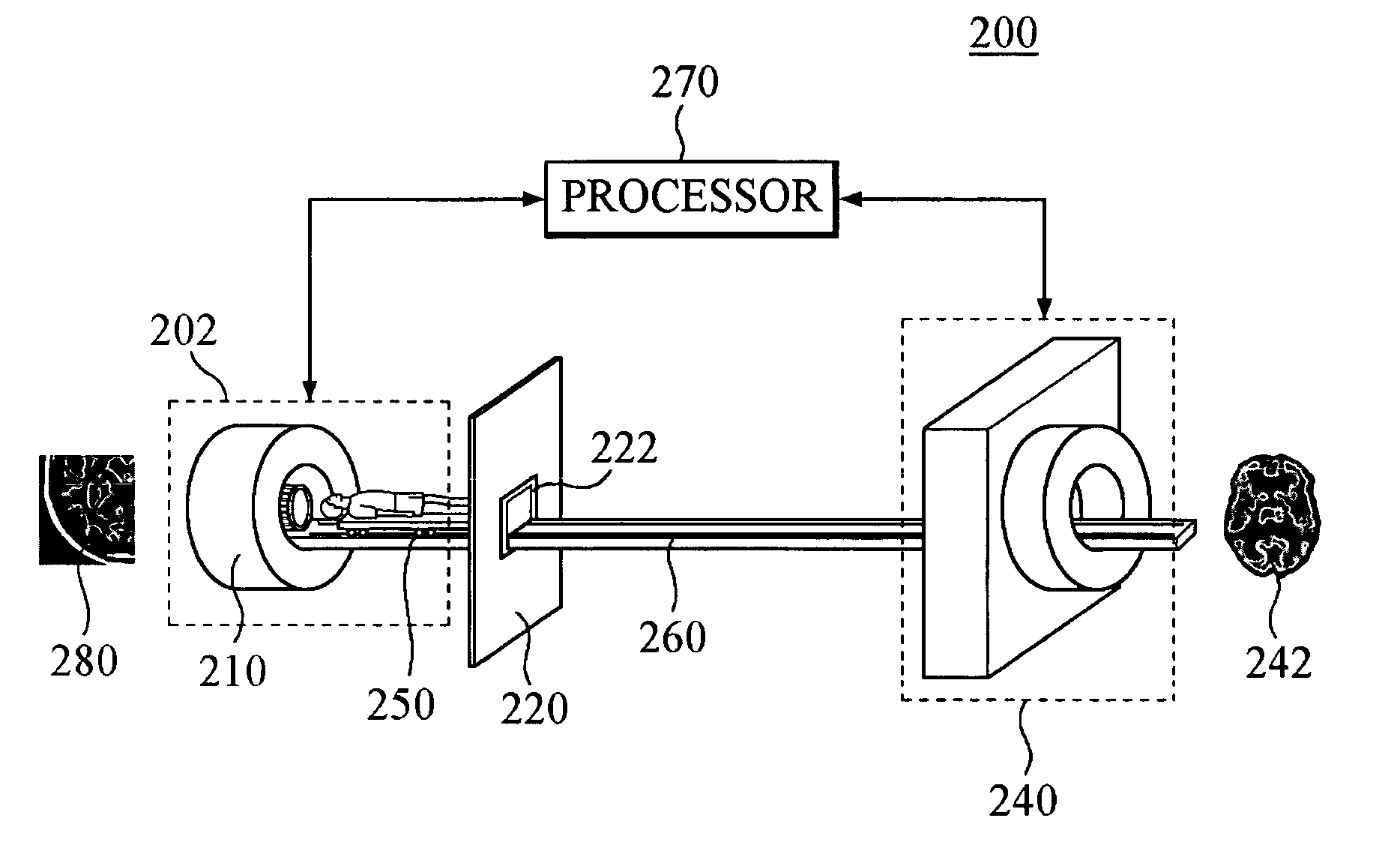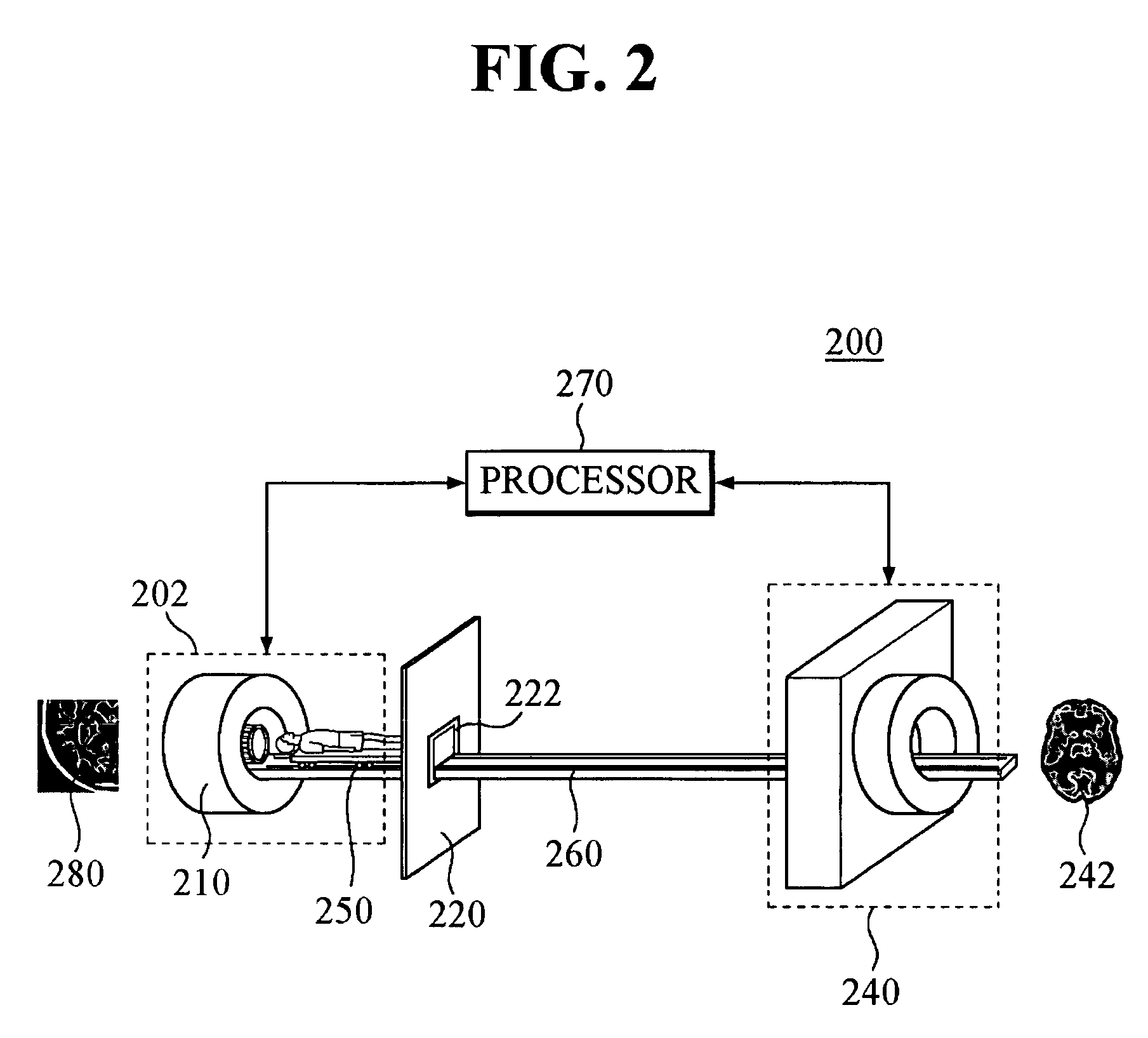PET - MRI hybrid apparatus and method of implementing the same
a hybrid apparatus and image technology, applied in the field of apparatus and methods for noninvasively obtaining images, can solve the problems of general lack of molecular specificity, limited accuracy of anatomical information of pet, and inability to achieve fmri or mri
- Summary
- Abstract
- Description
- Claims
- Application Information
AI Technical Summary
Benefits of technology
Problems solved by technology
Method used
Image
Examples
first embodiment
[0050] The patient bed 460 supports and moves a patient back and forth between the UHF-MRI scanner 410 and the HRRT-PET scanner 440. It can locate a patient to a RF coil of the UHF-MRI scanner 410, like the bed 250 of the
[0051] The transferring railway 460 runs between the UHF-MRI scanner 410 and the HRRT-PET scanner 440. The railway 460 is desirably required to maintain a prescribed relationship between image-taking origins for the UHF-MRI scanner 410 and the HRRT-PET scanner 440 when the patient is transferred along the railway between the scanners.
[0052] The transferring railway 460 further comprises a rotary table 462 to rotate a patient by 180 degrees, which is installed between the RF+ magnetic shield 420 and the magnetic shield 430. After being out of the UHF-MRI scanner 410, the rotary table 462 makes it easy for a patient's head to enter the HRRT-PET scanner 440, whose bore is too small to pass a patient's trunk.
[0053] The imaging processor 470 performs the necessary algo...
second embodiment
[0055]FIG. 6 illustrates a method performed in the second embodiment in accordance with the present invention.
[0056] In step 620, a patient is fixed on the patient bed 450. The patient bed 450 moves in a manner as to direct the head first along the railway 460 to transfer toward the UHF-MRI scanner 410. When the patient is moving, the RF+ magnetic shield 420 should be opened and the magnetic shield 430 should be closed. After the patient's feet pass through the shutter, the shutter then closes. The patient bed 450 continues to move toward the UHF-MRI scanner 410 until the patient's head is located inside an RF coil 414 of the UHF-MRI scanner 410.
[0057] In step 630, the UHF-MRI scanner 410 applies RF fields and gradients. The patient emits RF signals, which belong to the patient's head inserted within the RF coil 414. In general, the higher the magnetic fields are, the more larger and reliable and accurate information can be obtained. Thus, compared with the conventional MRI scanner...
PUM
 Login to View More
Login to View More Abstract
Description
Claims
Application Information
 Login to View More
Login to View More - R&D
- Intellectual Property
- Life Sciences
- Materials
- Tech Scout
- Unparalleled Data Quality
- Higher Quality Content
- 60% Fewer Hallucinations
Browse by: Latest US Patents, China's latest patents, Technical Efficacy Thesaurus, Application Domain, Technology Topic, Popular Technical Reports.
© 2025 PatSnap. All rights reserved.Legal|Privacy policy|Modern Slavery Act Transparency Statement|Sitemap|About US| Contact US: help@patsnap.com



